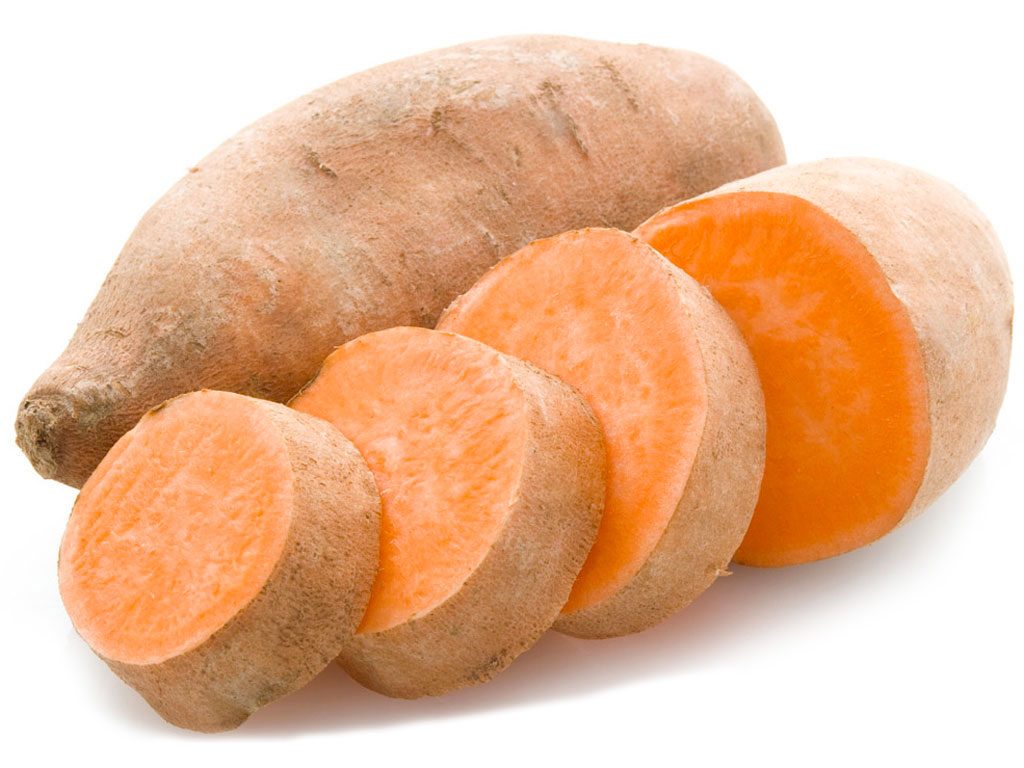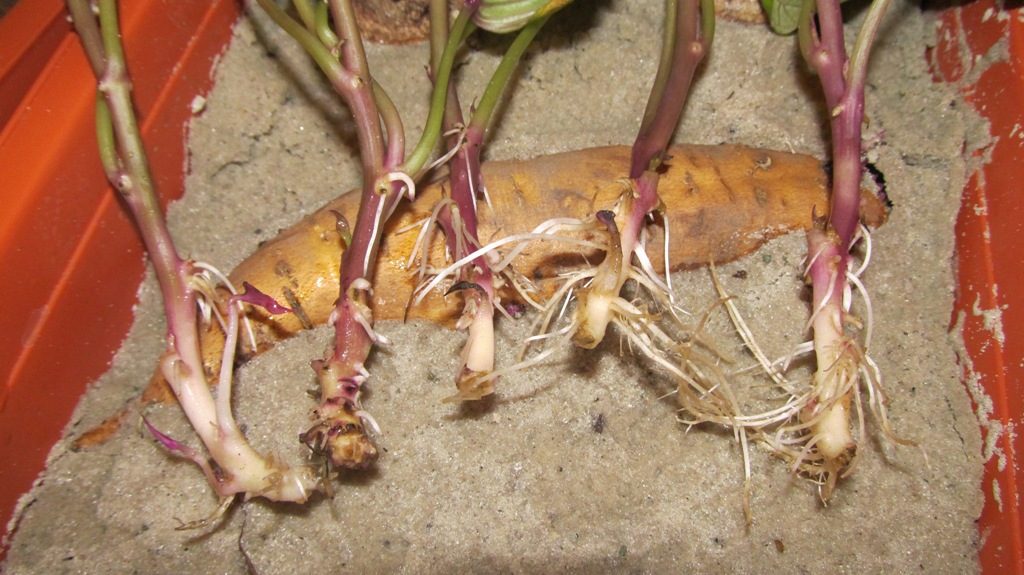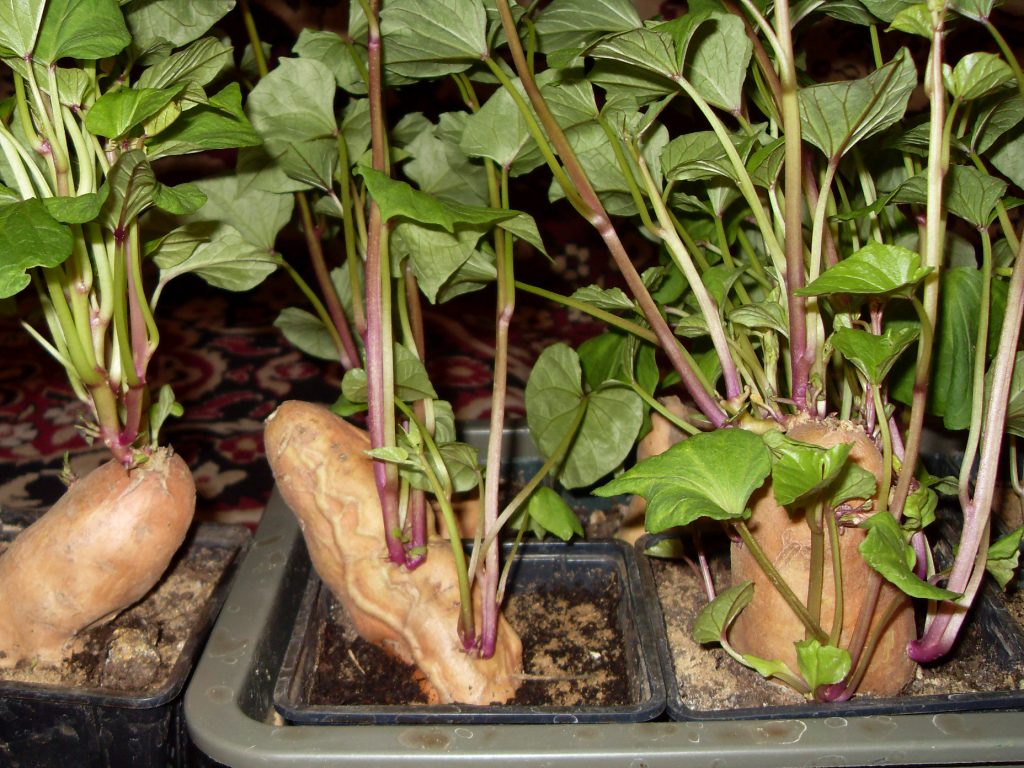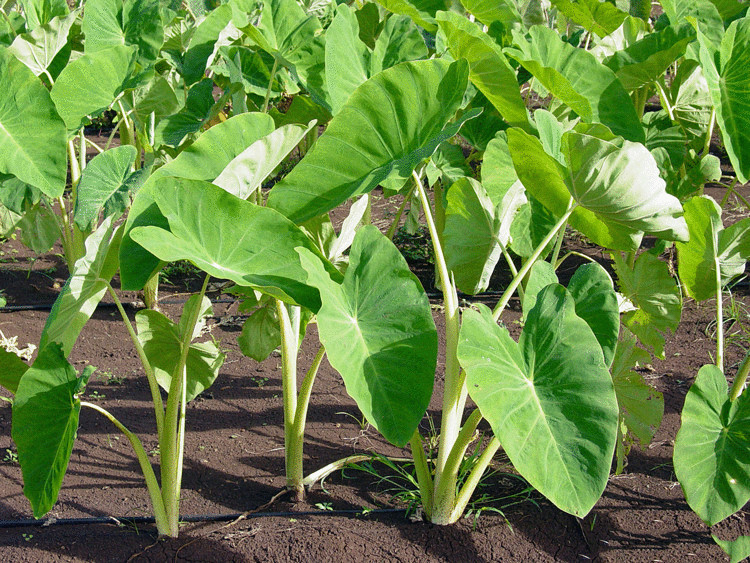Secrets and rules for growing sweet potatoes in the middle lane
Content
What conditions do root crops need?
The sweet potato itself is of tropical origin and is considered an exotic fruit. And yet it can be bred in the middle lane and even in Siberia.
Some experts believe that the cultivation of sweet potatoes takes much less energy than "harvesting" a potato crop. It does not need to be hilled. And the benefits from it are much greater.
In our latitudes, sweet potato grows in light soil and loves moderate watering. It is very good when the soil has a high nitrogen content, and it itself is sandy loam with an acidity level of 5.5-6.5. When growing, the plant spreads along the ground and, as it were, covers it and suppresses weeds.
The most comfortable temperature for its ripening and good yield is + 25-30 degrees. In cases where the temperature decreases and becomes less than the lower optimal mark, the process of plant growth slows down significantly. With the readings on the thermometer + 10C, the cultivation of sweet potatoes becomes impossible, since in such conditions the vegetable dies.
The quality of the environment in which the sweet potato was located will determine its yield and taste characteristics.
Video "Growing seedlings"
From the video you will learn how to properly grow sweet potato seedlings for planting.
Growing seedlings
At home, you can grow sweet potato seedlings from seeds or tubers. As a rule, it is problematic to find seeds in ordinary gardening stores; they can be ordered through special online stores or found out from farmers. But it should be understood that when making a purchase through the site, first you need to familiarize yourself with the reviews and reliability of the selected store.
The basis for planting includes: loose soil, humus, coarse sand. All components must be in equal amounts. You cannot use plain land taken from the garden. Firstly, it contains an insufficient amount of useful trace elements, and secondly, it may contain pests or be infected.
In order to grow sweet potato seedlings, it is necessary to pour the resulting earthen mixture into special boxes and not push the seeds very deeply. This procedure is most beneficial to do in the second decade of February. The finished boxes are covered with foil and placed in a warm place. The most important thing is not to forget, constantly, water the future vegetable.
To plant sweet potatoes, the shoots must be 15-20 cm tall. At the same time, the soil temperature is at least +15 degrees.
Before identifying a plant in the garden, he needs to go through the "course of a young soldier." Approximately 14 days before the final "move" boxes with seedlings are taken out into the fresh air and left there for several hours. This is done so that the plant gets used to the temperature drop and becomes more hardened.
Tubers are grown in January or February from fruits that are purchased in advance. They are planted in boxes or pots.With the narrow part down, the fruits are pressed into a special substrate by light pressure. Sprinkle on top with a 3-centimeter layer of coarse sand. This is done so that excess moisture comes out of the soil. This way the plants will not rot.  For complete confidence in a successful result and in order for the sweet potato seedlings to turn out to be of high quality and ready for transplantation, holes are drilled in the bottom of the box / pot.
For complete confidence in a successful result and in order for the sweet potato seedlings to turn out to be of high quality and ready for transplantation, holes are drilled in the bottom of the box / pot.
You can "bathe" the sweet potato in a solution of copper sulphate, this will help to avoid the attachment of any infection.
The optimum temperature for the tubers to germinate is + 17-27 degrees. In this case, you must not forget about regular watering. The first shoots appear after 1 month. One fruit of a vegetable produces 5-10 cuttings, and sprouts are removed on average 6 times every 8-10 days.
The internodes are separated from the tuber and transplanted separately into pots in order for the roots to break through. But they can also be placed in water or planted in a garden bed, but subject to an outside temperature of +25 degrees. Just like germinated seeds, they must be hardened and accustomed to the sun's rays.
Seedlings are grown from fruits that have not been stored in the refrigerator and have not been processed for long-term preservation. To do this, it is better to use sweet potatoes taken from farmers, rather than in stores.
Landing technique
Potato cultivation in open soil requires special features, it is best to choose calm areas.
In the autumn, the soil is preliminarily dug up and enriched with humus, rotted manure or potassium sulfate. If there is increased acidity in the soil, then it is necessary to reduce it by adding limestone. In the spring, before planting the future vegetable, fertilize the earth with ammonium nitrate and loosen it.
The holes are dug about 15 cm deep, and the previously grown sprout is planted in them. The spacing between the rows should be at least 70 cm, and the distance between the planted seedlings is about 30 cm, so there is an advantage for further harvesting a good harvest. This seating principle helps to create a natural "carpet" of leaves in the future and to protect against rapid loss of moisture from the soil.
They are planted so that the internodes are deepened 2 centimeters underground. To keep the sweet potato seedlings from fluctuating temperatures, they are covered with foil or plastic bottles. If the plant has taken root after planting, then new leaves begin to appear on it.
Vegetable care
Germinating the future vegetable correctly is an important part of the whole procedure, but you should also remember about the nuances of caring for it. The most important thing is to take into account the temperature indicators, to protect as much as possible from drops and cold winds.
Regarding watering, it should be noted that a sweet potato needs a lot of water, but only in the first month after planting.  In no case should you "fill" and make puddles, which provokes stagnation of water. Water replenishment is carried out when the topsoil dries out slightly. Germination can be improved with wood ash, which is infused with water for 2-3 weeks.
In no case should you "fill" and make puddles, which provokes stagnation of water. Water replenishment is carried out when the topsoil dries out slightly. Germination can be improved with wood ash, which is infused with water for 2-3 weeks.
Rooting in knots should be avoided. This will significantly affect the quality of the tubers. When going around, pick off the roots under the leaves.
When to Harvest?
The timing of digging the sweet potato depends on some important factors. These primarily include planting time, variety and region. Depending on the type of this product, it is possible to determine the maturation period in the soil (which lasts from 3 to 6 months).
The main indicator of the collection is considered to be yellowed tubers and foliage on the bushes. Most often, it is recommended to harvest in warm and not rainy weather, since a wet vegetable is stored for less time and deteriorates faster. After digging, dry for several hours in the fresh air. But, despite this, there are species that can be dug out after the first frost.
Usually the amount of the crop is 1 to 2 kg / m2.Harvesting, for the preservation of the integrity of the tubers, is recommended with a pitchfork, since the sweet potato is considered very easy to damage. Storage must be carried out in small boxes and at a temperature of 8 to 15 degrees. Exposure - 4-7 days, room temperature 25-30C.
The conditions for storing sweet potatoes are important in order to keep the vegetable in good condition for a long time.
Sweet potato cultivation in the middle lane does not cause much trouble, the main thing is to adhere to certain recommendations and the main cultivation system.
Video "Increasing the harvest"
From the video you will learn how to increase the yield of sweet potatoes.



